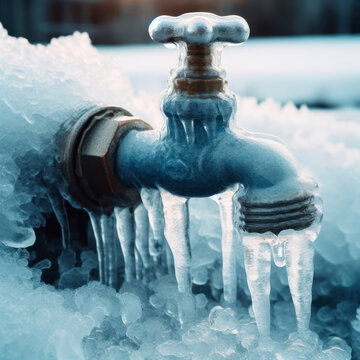Protecting Your Pipes from Cold Weather: Effective Methods
Protecting Your Pipes from Cold Weather: Effective Methods
Blog Article
In this article down the page you might get additional decent answers in relation to Winter Plumbing Precautions: Preventing Frozen Pipes.

Winter can damage your plumbing, specifically by freezing pipelines. Here's just how to avoid it from occurring and what to do if it does.
Intro
As temperatures drop, the danger of frozen pipelines rises, possibly causing costly repair services and water damages. Recognizing exactly how to avoid frozen pipes is critical for homeowners in cool climates.
Comprehending Icy Pipelines
What triggers pipelines to freeze?
Pipelines ice up when exposed to temperatures listed below 32 ° F (0 ° C) for prolonged durations. As water inside the pipes freezes, it broadens, putting pressure on the pipeline walls and potentially causing them to break.
Threats and problems
Icy pipes can result in water supply interruptions, property damages, and costly repair work. Ruptured pipes can flood homes and cause comprehensive architectural damages.
Indicators of Frozen Piping
Determining icy pipes early can prevent them from breaking.
Just how to recognize icy pipelines
Look for lowered water circulation from faucets, unusual smells or sounds from pipelines, and visible frost on exposed pipes.
Avoidance Tips
Protecting prone pipes
Cover pipes in insulation sleeves or utilize warm tape to safeguard them from freezing temperatures. Focus on pipes in unheated or exterior locations of the home.
Home heating strategies
Maintain interior areas properly heated, particularly locations with plumbing. Open up cupboard doors to allow warm air to circulate around pipelines under sinks.
Securing Exterior Pipes
Yard pipes and outdoor faucets
Disconnect and drain yard pipes before winter months. Install frost-proof spigots or cover outdoor faucets with insulated caps.
What to Do If Your Pipes Freeze
Immediate actions to take
If you think icy pipelines, maintain faucets open to soothe pressure as the ice thaws. Use a hairdryer or towels soaked in warm water to thaw pipelines slowly.
Long-Term Solutions
Architectural adjustments
Consider rerouting pipelines far from exterior wall surfaces or unheated locations. Add extra insulation to attics, cellars, and crawl spaces.
Updating insulation
Invest in top notch insulation for pipelines, attics, and walls. Appropriate insulation assists preserve consistent temperatures and decreases the threat of icy pipelines.
Final thought
Preventing icy pipelines requires positive actions and fast actions. By recognizing the reasons, signs, and preventive measures, home owners can shield their plumbing during winter.
6 Proven Ways to Prevent Frozen Pipes and Protect Your Home
Disconnect and Drain Garden Hoses
Before winter arrives, start by disconnecting your garden hoses and draining any remaining water. Close the shut-off valves that supply outdoor hose bibs and leave the outdoor faucet open to allow any residual water to drain. For extra protection, consider using faucet covers throughout the colder months. It’s also important to drain water from any sprinkler supply lines following the manufacturer’s directions.
Insulate Exposed Pipes
Insulating your pipes is an effective way to prevent freezing. Pipe insulation is readily available at home improvement stores and is relatively inexpensive. Pay close attention to pipes in unheated areas such as the attic, basement, crawl spaces, or garage. Apply foam insulation generously to create a buffer against the cold. You can also wrap your pipes in heat tape or thermostat-controlled heat cables for added warmth.
Seal Air Leaks
Inspect your home for any cracks or openings that could let in cold air. Seal any holes around the piping in interior or exterior walls, as well as the sill plates where your home rests on its foundation. Additionally, make sure to keep your garage door closed unless you’re entering or exiting. Leaving it open creates a significant air leak that can lead to frozen pipes.
Allow Warm Air Circulation
During cold snaps, it’s essential to allow warm air to circulate evenly throughout your home. Leave interior doors ajar to promote better airflow. Open kitchen and bathroom cabinets to help distribute heat consistently around the rooms. If you have small children or pets, be sure to remove any household chemicals or potentially harmful cleaners from open cabinets for safety.
Let Faucets Drip
A small trickle of water can make a big difference in preventing ice formation inside your pipes. When temperatures drop significantly, start a drip of water from all faucets served by exposed pipes. This continuous flow helps prevent the water from freezing. Additionally, running a few faucets slightly can relieve pressure inside the pipes, reducing the chances of a rupture if the water inside does freeze.
https://choateshvac.com/6-proven-ways-to-prevent-frozen-pipes-and-protect-your-home/

Do you like more info about Prevent Frozen Pipes ? Write a remark further down. We will be happy to know your insights about this write up. We hope that you come back again soon. You should take the time to share this content if you enjoyed it. We treasure your readership.
Details Here Report this page